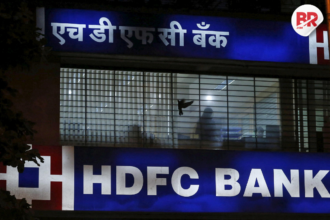
Satellite internet is fast emerging as India’s next big tech battleground. With over 65% of India’s population still living in rural areas, traditional networks struggle to reach the country’s toughest terrains.
Elon Musk’s Starlink is reportedly exploring tie-ups with state-run BSNL and the Tata Group to bridge this digital divide—potentially reshaping how India gets online.

Human Insight – What Does This Mean for You?
If you’re living in a remote village or managing a business in a hard-to-reach area, this could change your world.
Imagine streaming classes, managing online payments, or accessing healthcare—all with stable, fast internet, even if you’re in the middle of nowhere. That’s the promise of satellite internet in India: reach where cables can’t crawl.
Why Now? Why India?
India’s terrain isn’t just diverse—it’s defiant. From Himalayan peaks to Andaman islands, laying cables can cost a fortune. Mobile networks try their best, but dark zones still exist. Satellite internet offers a fix from the sky: beams of data dropped from low Earth orbit satellites, sidestepping the need for physical infrastructure.
That’s why Elon Musk is here. Starlink already has 5,000+ satellites in orbit and eyes India’s underserved regions as a high-potential market. But rather than go solo, Musk may be seeking powerful local partners.
The Power Trio: Starlink, BSNL, Tata
- Starlink (Musk) brings the tech: a proven satellite network that can deliver high-speed internet to nearly any spot on Earth.
- BSNL, despite its bureaucratic baggage, holds a crucial asset: nationwide infrastructure and deep rural presence.
- Tata Group adds credibility, capital, and operational muscle, with a legacy of building industries, not just riding trends.
This isn’t just a deal—it’s a digital moonshot. Together, they could leapfrog India’s rural broadband gap in one coordinated push.
Also Read Is Elon Musk Moving Away from DOGE? Here’s What He Said After Tesla’s Poor Q1 Results
The Timing is No Coincidence
The Indian government is aggressively pushing for rural digitization. At the same time, Musk needs regulatory clearances to operate Starlink in India—approvals he’s struggled to secure on his own. Tying up with BSNL or Tata could give him local leverage and smoother entry.
Meanwhile, Amazon’s Project Kuiper is revving its engines. It plans to launch over 3,200 satellites, promising a rival service soon. The stage is set for a sky-high showdown.
What’s the Catch?
Let’s not float off just yet. Real challenges still loom:
- Spectrum allocation in India is tightly regulated.
- Affordability is key. Satellite services must price themselves to compete with ₹200-a-month mobile data packs.
- Climate resilience matters. These connections need to hold steady through monsoons, dust storms, and heatwaves.
Plus, rural users aren’t just looking for connectivity—they want reliability, low latency, and support in local languages.
Why It Matters
In a country where internet access can still be a luxury, this isn’t just a business deal—it’s a shot at inclusion. From enabling telemedicine to online education, satellite internet in India could flatten the digital inequality curve, especially for remote and tribal communities.
Sure, Musk’s motives are partly market-driven. But if it takes a billionaire, a public telecom underdog, and an industrial giant to connect India’s last mile—so be it.
Also Read Musk Breaks Silence on Tesla Successor Leak — and It’s Personal












